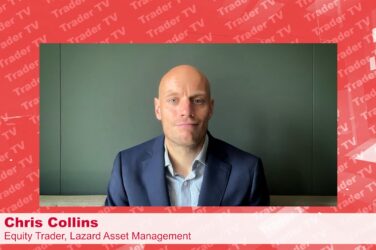Embracing Transparency: How the SEC’s Order Handling Rules Redefined Market Making (By Jay Biancamano, Fidessa)
09.28.2016First introduced in 1997, the SEC’s Order Handling Rules were designed to improve an antiquated trading model in which spreads were wide, pricing was opaque, and trading costs were high. More than just shifting power back to the investor, the rules helped spur fragmentation, transaction cost analysis, and algorithmic trading. Jay Biancamano, Head of Equities Product Marketing Americas, explains how the structural and technological changes brought on by the rules still shape electronic trading today.
The boom in electronic trading in the 1990s brought to light many inefficiencies in the ways equities were traded at the time. Specifically, NASDAQ market makers were under scrutiny for the methods they used to display stock quotes and liquidity. It was very similar to the scrutiny we see off-exchange trading experiencing today, and it led to considerable changes.
Back then, the NASDAQ market maker model was set up in a way that allowed the activity for each stock to be effectively controlled by a small number of firms, sometimes as little as one or two. This “monopoly” of sorts offered very little incentive for market makers to offer the fairest prices possible to investors – in fact, as was discovered at the time, many firms routinely withheld order liquidity from the market, inhibiting price discovery and, as a result, best execution via artificially higher spreads.
It was only when some burgeoning and innovative agency firms like ITG and Instinet began to quantify the costs of trading that cracks in this model began to appear. These firms began to analyze the cost and market impact of trades. In what was a predecessor to today’s transaction cost analysis (TCA), this research revealed a vast, inequitable difference in cost between executing an order through NASDAQ versus the New York Stock Exchange, which ran a different auction-style model.
Around the same time a new type of venue began to appear, electronic communication networks or ECNs – which were essentially private trading systems which displayed and matched buy and sell orders electronically. Not only were these venues able to facilitate executions between interested parties, as more liquidity found its way to ECNs, they began to narrow spreads and thus offer better execution than market makers. While privately owned, ECNs were fast becoming a viable alternative to this opaque market-making model that was drawing ire from investors and regulators alike.
Bringing light into the darkness
Realizing the importance of transparency to the health of the stock markets, the SEC decided, in 1996, to overhaul the way NASDAQ market makers published quotes and disclosed order sizes. Beginning that year, the regulator introduced a series of rules – collectively known as the Order Handling Rules – that would ultimately improve price discovery for NASDAQ stocks.
The first rule was the requirement for market makers to display the size and price of client limit orders to the marketplace, known as the Limit Order Display Rule. According to the SEC, this rule gave “investors the ability to directly advertise their trading interest…. enabling them to compete with market maker quotations and narrow the size of the bid-ask spread.”
The second rule was the requirement for market makers to display and honor quotes from dealers on the ECNs, a mandate known as the revised Quote Rule. In other words, previously undisclosed (and more competitively priced) orders on ECNs would now be published and, in the case that the quotes were more competitive than their own bid-ask spread, the market makers would have to honor those dealer’s prices.
The SEC initiated a pilot program for the Order Handling Rules for a small number of stocks. The pilot was deemed successful after a relatively short period of time, and after determining that the rules brought no adverse effects to spreads, volatility or the depth of stocks, the SEC moved to extend the requirements to all NASDAQ stocks in 1998.
Facilitating the technological shift
While most industry participants were focused primarily on how the Order Handling Rules would redefine market making, there were a number of firms with the foresight to understand that there were going to be innovative technological changes that would require great care. First and foremost, market makers and other participants would have to figure out how to capture and display the vast variety of quote and order data. This challenge would soon be exacerbated by a rise in the number of ECNs and Alternative Trading Systems (ATS).
Fidessa played a vital role in helping market makers incorporate the various requirements of the Order Handling Rules into their trading workflow and operations. In addition to assisting in the capture and display of quote data, Fidessa focused on improving operational efficiencies to facilitate the consolidation of the various data into a single view, and ensured that it would be updated continuously – in effect creating a consolidated front-end.
Though relatively new to the US in 1997, Fidessa had already built a deep understanding of NASDAQ and the interplay between various trading venues through its work in developing the global trading capabilities for major investment banks. Utilizing this prowess, the company guided clients through the process of better interfacing and engaging with the growing variety of ECNs, ATSs, market makers, investors and other participants. Additionally, Fidessa helped ensure that the unique rules of each venue were complied with.
A whole new world for market makers
Proponents of the Order Handling Rules extolled the results: tighter bid-ask spreads, higher volumes of reported quotes, an increase in the number of executions, and an improvement in liquidity. Overall, these changes created a fairer trading environment for institutions and other investors, the market was becoming more transparent.
The rules sounded the death knell of the old market-maker model, as the regulation spurred the creation of new ECNs which offered better prices and lower trading costs. Market makers were forced to adapt or die, it was a simple as that.
The same early iteration of TCA that shed light on the market makers’ practices also helped drive the evolution of algorithmic trading. Fueled by benchmarking and a near obsession with lowering the absolute cost of trading, investors turned to brokerages and quantitative shops to create a way to trade according to a benchmark, and do so intelligently – these strategies were the predecessors to today’s algorithms.
Today, the market-maker landscape looks radically different, encompassing a vast number of firms with unique value propositions, from smaller specialists to high-frequency shops. Yet, some observers wonder whether the market has become too fragmented and too fast. For example, block trading still remains difficult and the solutions that improved liquidity and executions in NASDAQ stocks only exacerbated the difficulty of executing blocks. Even 20 years later there is still no clear singular solution for institutions to achieve best execution for all block trades. It is this type of challenge that has many wondering if there is an opportunity for high-touch trading to stage a comeback. While no one is longing for a return of the old model, this challenge may encourage the creation of manual block trading specialists that focus more on intelligently unearthing liquidity than they are on speed.
Whether it be in the ongoing push for transparency or the influence that institutions have on courting favorable trade prices from venues, the effects of the SEC’s Order Handling Rules are still felt today. Ever aware of this impact, Fidessa continues to work with market makers and investors alike to ensure that electronic trading evolves in a way that promotes a balance of efficiency, equity and benefits for all participants.
As a pioneer in trading technology, Fidessa’s experience with the Order Handling Rules was just one example of many, over the last 20 years, in which we’ve provided solutions to our clients to help them navigate and benefit from the ever-changing trading landscape. We look forward to continuing this journey with them in true partnership for the next 20 years and beyond.






